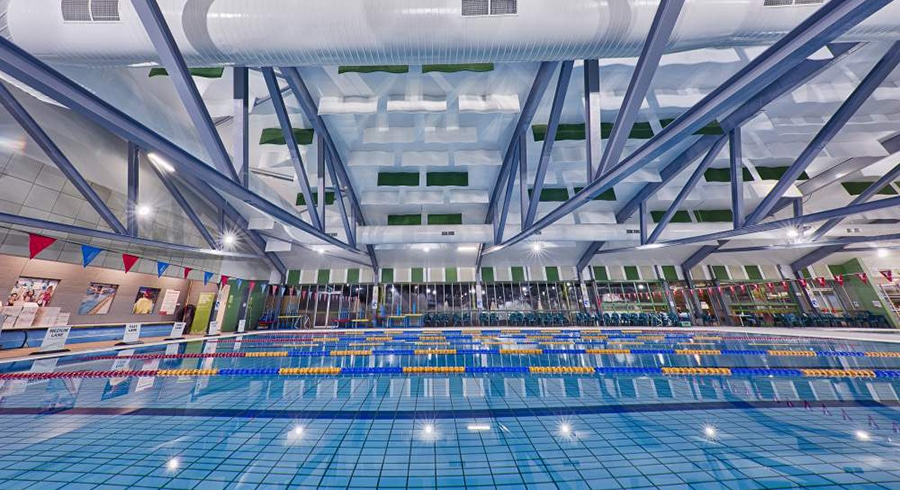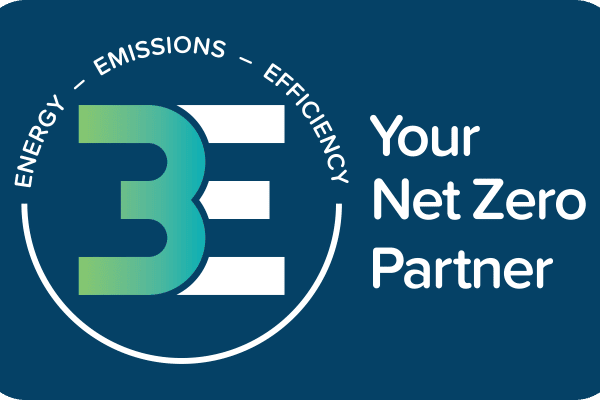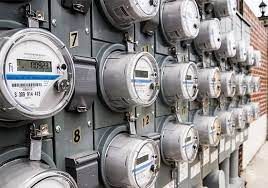Aquatic centres, particularly ones with indoor heated pools, are very expensive to operate and maintain given how much energy is used. Water and space heating can account for up to 80% of an aquatic centre’s total energy costs and is the single most expensive operating cost after labour.¹
When considering energy cost saving strategies for aquatic centres, pool operators should first look for opportunities to reduce the demand for water heating, before considering heating equipment modifications or upgrades. In this article we briefly look at ten different energy cost saving strategies for aquatic centres that pool operators can use to reduce energy costs by reducing the demand for water and space heating in Aquatic Centre/ pool halls.
Ten ways to achieve energy cost savings in Aquatic Centres by reducing heat loss and demand for water and space heating
Reducing heat loss is one of the easiest and cost-effective ways to reduce pool heating and energy costs.
Most of the heat loss is from evaporation, therefore this should be a key focus when aiming to reduce heating demand.
1) Reduce pool water temperature set point
Lower pool water temperature reduces energy costs as well as reducing heat losses from evaporation. This opportunity requires adjustment of the pool water temperature set point. There are several possible scenarios:
- permanent change (for instance, 26°C instead of 27°C all year round)
- seasonal change (for instance, 26°C instead of 27°C in summer only)
- daily adjustments based on the attendance of the pool. If the pool has regular attendance patterns, the pool temperature can be automatically adjusted, according to a programmed schedule, to be warmer when young children occupy the pool and colder otherwise
- a combination of the above
2) Increase relative humidity set point (indoor pools only)
Higher relative humidity reduces heat losses from evaporation. It is recommended to maintain the relative humidity inside the pool hall between 50% and 60%. Higher humidity can increase the risk of structural damage to the building from condensation and corrosion. If the relative humidity set point is 50%, consider increasing the set point to 55% and then 60%. Customer feedback must be closely monitored as a high relative humidity might create a feeling of damp atmosphere and result in a reduction of attendance
3) Optimise filter backwashing
Backwashing the filters are necessary to maintain good water quality and commonly happens on a fixed time schedule. This can result in unnecessary backwashing. A more energy efficient strategy is to only backwash when required.
As the amount of contaminant in the filter increases, the pressure drop across the filter increases, and this change in pressure drop can be used to identify when backwashing is needed. The filter manufacturers provide guidelines about the optimum pressure drop for backwashing a filter.
This opportunity requires:
- installing pressure gauges on each filter (if not yet installed)
- identifying the optimum pressure drop for backwash
- training pool operators about the new backwashing procedure.
4) Insulate pipework
This opportunity is relevant for outdoor pipework. While insulating outdoor pipework saves energy in all heated pools, significant savings are likely where the yearly average outdoor temperature is 10°C lower than the heated water in the pipe. When this is the case, insulated outdoor pipework will reduce heat loss to ambient air.
5) Increase pool hall air temperature (indoor pool only)
Higher air temperature while maintaining the relative humidity in pool halls, reduces water evaporation from the pool. However, it’s important to ensure that the additional energy required to heat the air is lower than the expected savings from reducing evaporation losses. This can be assessed by a qualified consultant.
6) Use pool covers overnight
Pool covers are an easy, cost effective opportunity that will significantly reduce energy in most heated pools, however they require storage and maintenance.
7) Reduce air movement above pool water surface (outdoor pool)
Lower air movement above the pool surface reduces heat losses from convection and evaporation. Installing glass walls around a heated pool will reduce wind levels.
8) Insulate pool walls
Roughly 5% of heat from the pool water is lost through the ground. Installing or upgrading pool wall insulation can save energy but is recommended only during major refurbishment or redevelopment of pools.
9) Insulate the pool hall (indoor pool only) and keep doors and windows closed
Improved insulation of pool halls reduces heat loss, saves on energy costs, and helps to regulate the indoor climate making it more comfortable for patrons.
You should always keep doors and windows closed wherever possible. Open doors can increase heating and cooling costs by up to 50%. Consider installing plastic strip doors throughout the centre – especially to external doors. These will significantly reduce the exchange of air and reduce heating and cooling requirements.
In hot weather, pull down blinds and shades wherever possible, to lower loads on the air conditioner. In winter keep the shades up, allowing the sun to warm the building – then close the shades again at night to prevent heat loss. Make sure all heating and cooling outlets are clear of obstructions like furniture and partitions.
10) Don’t over-cool or over-heat
Aquatic centres have two major requirements for space heating: the pool rooms, which often run on a centralised system, and smaller rooms, including the gym, class and staff rooms, which are usually serviced by air-cons.
In your centre you need to ensure that staff know how to set the timer on the centralised system to operate at the desired temperature range and to reduce the temperature overnight and during other unoccupied times. Ideally you should have a space heating control system which would include temperature sensors in the return air temperature, fresh air intake and a relative humidity sensor on the return air duct.
The second type of space heating in an aquatic centre is manual control heating and cooling (such as air-cons) for rooms such as the gyms and group fitness. These can also benefit from careful monitoring of their temperatures. Room temperatures should be set to 24-25°C in summer and 18-20°C in winter. Areas such as foyers, toilets and storerooms can be set to around 26°C in summer and 16°C in winter.
Fans reduce the need for air conditioning. This means if you need the air conditioner on, instead of setting it to 24-25°C in summer, you could set it to 27-28°C. Unlike air conditioning, fans work by cooling people, not the room, so make sure you turn them off when you leave the room. If you have reversible fans you can also use them in winter (see illustration, below) to help push warm air, that naturally rises, back down.
Managing expectations
Of course, the comfort of the patron is always paramount. But with effective communications you can bring patrons along for the journey and reduce and manage incidences of complaint.
Ideally, every member of staff should have confidence in setting appropriate temperature settings and be able to explain to patrons what they are and why they are optimum. Some centres have found that a ‘sandwich board’ display board by reception advertising room and pool temperatures reduces the risk of client dissatisfaction. You might also include energy efficiency goals and benchmarks for the centre.
Ecosave are specialists at reducing energy costs in Aquatic Centres by taking a holistic approach to energy consumption and energy management. A team of engineering and energy and water efficiency experts can assist Pool Operators to reduce energy and maintenance costs in both indoor and outdoor pools.
Book a complimentary phone appointment with one of our Aquatic Centre specialists today for a free desktop assessment of your facilities.
Free Webinar: Energy Efficiency in Aquatic Centres
For more information about how to reduce energy costs in an Aquatic Centre, click here to download a Free 1-hour Webinar and Transcript
1. NSW Office of Environment and Heritage. (2019). Energy efficient water heating technology guide for aquatic centres. Retrieved from environment.nsw.gov.au 2. Energy.gov.au. (2020). A guide to improve the energy efficiency at your YMCA aquatic centre. Retrieved from Energy.gov.au







